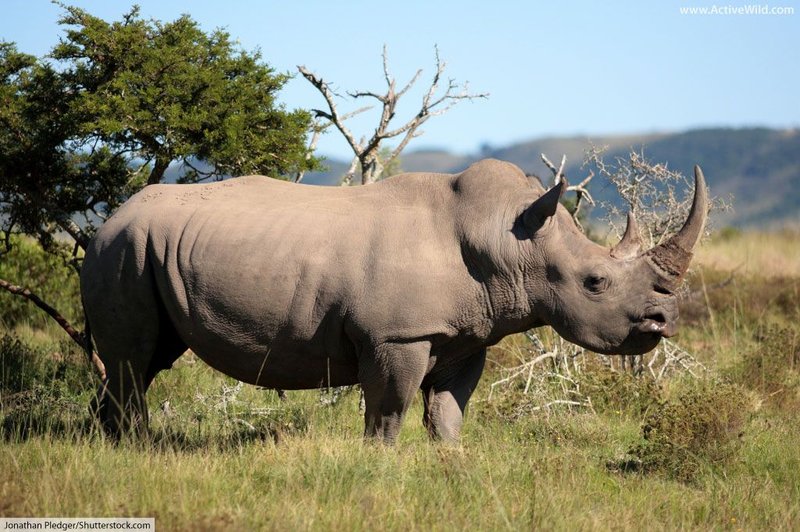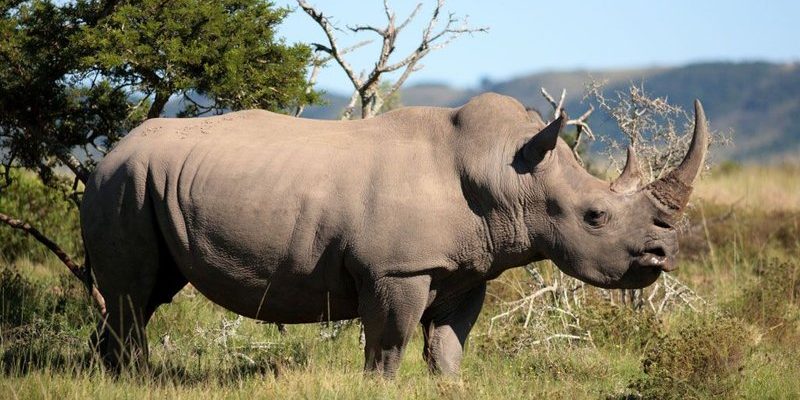
Picture this: a prehistoric giant that roams the grasslands of Africa, munching on grass and occasionally squabbling with its friends in the mud. These massive creatures are not just fascinating because of their bulk, but also because of their important role in their ecosystem. Their stories are filled with adventure, drama, and, sadly, challenges that threaten their survival. So, grab a cup of coffee, sit back, and let’s explore some cool facts about the white rhino that might surprise you.
1. There Are Two Subspecies of White Rhinoceros
The white rhinoceros is divided into two subspecies: the Southern white rhinoceros and the critically endangered Northern white rhinoceros. The Southern white rhino is the more numerous of the two, with a population estimated at around 18,000 individuals. They can primarily be found in South Africa, Zimbabwe, and Namibia. These rhinos often roam in groups, enjoying grassy savannas.
On the other hand, the Northern white rhino is in serious trouble. As of now, only two known individuals exist, both females living in a conservancy in Kenya. Their plight highlights the importance of conservation efforts to protect this species—an urgent situation that reminds us of our responsibility to preserve wildlife.
2. They Are Not Actually White
You might be surprised to learn that the name “white rhinoceros” is a bit misleading. They aren’t actually white! The name originates from a mistranslation of the Dutch word “wijde,” which means “wide,” referring to their broad mouths. These rhinos have wide, square-shaped mouths that are perfect for grazing on grasses.
In contrast, the black rhinoceros has a more pointed, hooked lip, ideal for browsing on leaves and shrubs. So, if you ever come across one in the wild, don’t expect a white color—these gentle giants can be a grayish-brown, blending in beautifully with their grassy habitats.
3. They Have a Unique Social Structure
White rhinos are quite social animals and often prefer the company of others. They typically gather in groups called crashes, which can range from just a few individuals to over 15. Living in a crash helps protect them from predators, as they can keep a lookout for danger together.
Interestingly, social dynamics can be quite complex. Like human friendships, some rhinos form closer bonds than others. They communicate with each other through various vocalizations, body language, and even facial expressions! Observing these interactions can be like watching a soap opera unfold in the animal kingdom.
4. Their Size Is Impressive
The white rhinoceros is the second-largest land mammal, after the elephant. Adult males can measure up to 6 feet tall at the shoulder and weigh between 3,000 and 5,000 pounds! To put that into perspective, imagine a large car or a small bison. Just think about how much grass they munch through every day—around 100 pounds!
Their massive size is not just for show; it serves a purpose in the wild. This bulk helps deter predators, while their thick skin acts as armor against environmental challenges. However, despite their size, white rhinos can be surprisingly graceful and agile, especially when they run at speeds up to 30 miles per hour.
5. They Play a Key Role in Their Ecosystem
White rhinoceroses are often categorized as “keystone species,” meaning they have a big impact on their ecosystem. By grazing on grasslands, they help maintain the health of these habitats. Their eating habits encourage new plant growth and create more space for other species to flourish.
Furthermore, as they move around, they dig up vegetation and create small wallows, which are mud holes that other animals can use. This creates a mini-ecosystem that supports various wildlife, showcasing how interconnected nature truly is.
6. Their Horns Are Made of Keratin
You may have heard about the value of rhino horns in traditional medicine, but did you know that rhino horns are made entirely of keratin? That’s the same substance that makes up human hair and nails. Unlike elephant tusks, which are made of ivory, rhino horns grow continuously over a rhino’s lifetime.
Sadly, this has led to poaching for their horns, pushing rhinos to the brink of extinction. Conservation efforts are ongoing, focusing on anti-poaching measures and raising awareness about the myths surrounding the medicinal properties of rhino horn. Here’s the thing: protecting these animals means protecting their futures and the biodiversity of our planet.
7. They Are Pregnant for a Long Time
If you thought human pregnancies were long, wait until you hear about white rhinos! The gestation period for a white rhino is about 16 months—that’s nearly a year and a half! After this long wait, a single calf is born, usually weighing around 100 pounds.
These little ones are precocious; they can stand and walk within a few hours of birth. Mums are very protective, watching over their calves closely as they learn how to navigate their world. The bond between a mother and her calf is incredibly strong, often lasting for several years.
8. They Have Few Natural Predators
Due to their sheer size and strength, adult white rhinoceroses have very few natural predators. However, young calves can fall prey to lions, hyenas, or crocodiles if they stray too far from their mothers. Surprisingly, young rhinos are more vulnerable than you might think.
While humans don’t directly threaten them in the wild, poaching is a significant issue. Protecting them from human-related threats like habitat loss and illegal hunting is crucial to their survival. Conservationists and wildlife parks play an essential role in ensuring these powerful animals can thrive.
9. They Are Endangered Species
As you might have guessed, the white rhinoceros faces serious challenges. While the Southern white rhino population has seen some recovery thanks to conservation efforts, the Northern white rhino is on the verge of extinction. The main threats to their survival include habitat loss and poaching for their horns.
Conservation programs are actively working to protect these magnificent creatures. They involve anti-poaching patrols, habitat restoration, and public awareness campaigns to help people understand the importance of rhino conservation. Every effort counts, and you’re helping just by being informed!
10. They Have a Majestic Presence
Finally, let’s not forget how incredible it is to see a white rhinoceros in its natural habitat. With their massive size, sturdy build, and thoughtful behavior, they command respect. Observing a white rhino as it grazes peacefully or interacts with its fellow rhinos can be a truly humbling experience.
Conservationists and wildlife enthusiasts advocate for experiences that highlight the beauty of these creatures. By sharing their stories and supporting conservation efforts, we can ensure that future generations have the chance to witness their majesty.
In conclusion, the white rhinoceros is an extraordinary animal with a rich tapestry of facts and stories. From their social structures to their efforts for survival, there’s so much more beneath the surface of this magnificent creature. As we continue to protect and learn about these giants, let’s celebrate their contributions to our world and work together to secure their future.

